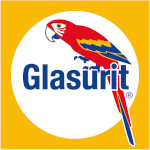Driving in the EU
_xl.jpg)
Published: 03/08/2021
What UK drivers need to do to drive when visiting the EU
Driving licences and international driving permits
You need to carry your UK driving licence with you.
You do not need an international driving permit (IDP) to visit and drive in the EU, Switzerland, Iceland or Liechtenstein.
You might need an IDP to drive in some EU countries and Norway if you have:
- a paper driving licence
- a licence that was issued in Gibraltar, Guernsey, Jersey or the Isle of Man.
You will not need an IDP to drive when visiting Ireland if you have a UK driving licence.
You can get an IDP over the counter at the Post Office.
An IDP costs £5.50 and drivers must:
- be a resident of Great Britain or Northern Ireland
- have a full UK driving licence
- be 18 or over
Driving licence exchange
If you live and drive in an EU country, Iceland, Liechtenstein, Norway or Switzerland, you need to exchange your driving licence for a local one.
Check the deadlines and rules for licence exchange in the country you live in.
Insurance for your vehicle, caravan or trailer
All UK vehicle insurance provides the minimum third party cover to drive in the EU (including Ireland).
You do not need to carry a green card when you drive in the EU (including Ireland), Andorra, Bosnia and Herzegovina, Iceland, Liechtenstein, Norway, Serbia, or Switzerland. You still need valid vehicle insurance.
More about vehicle insurance.
Vehicle registration documents
If you’re taking your vehicle to the EU for less than 12 months, carry one of the following documents:
- your vehicle log book (V5C), if you have one
- a VE103 to show you’re allowed to use your hired or leased vehicle abroad
Trailer registration
You need to register some commercial and non-commercial trailers before towing them to or through most EU and EEA countries.
Find out more about trailer registration.
GB stickers and number plates
You do not need a GB sticker if your number plate includes the GB identifier on its own or with the Union flag (also known as the Union Jack).
You do not need to display a GB sticker to drive in Ireland.
You must display a GB sticker clearly on the rear of your vehicle if your number plate has any of the following:
- a Euro symbol
- a national flag of England, Scotland or Wales
- numbers and letters only – no flag or identifier
If you’re in Spain, Cyprus or Malta, you must display a GB sticker no matter what is on your number plate.
What to do if you’re involved in a road accident
If you’re involved in a road accident in an EU country, you should, in the first instance, contact your insurance provider.
Any legal proceedings against either the responsible driver or the insurance provider of the vehicle will need to be brought in the EU or EEA country where the accident happened. You might have to make your claim in the local language.
You will not get compensation in some countries if the accident is caused by an uninsured driver or if the driver cannot be traced.
Get legal advice if you need more information about this.
For more information please efer to DVLA webiste: Driving in the EU - GOV.UK (www.gov.uk) or https://www.gov.uk/driving-abroad










